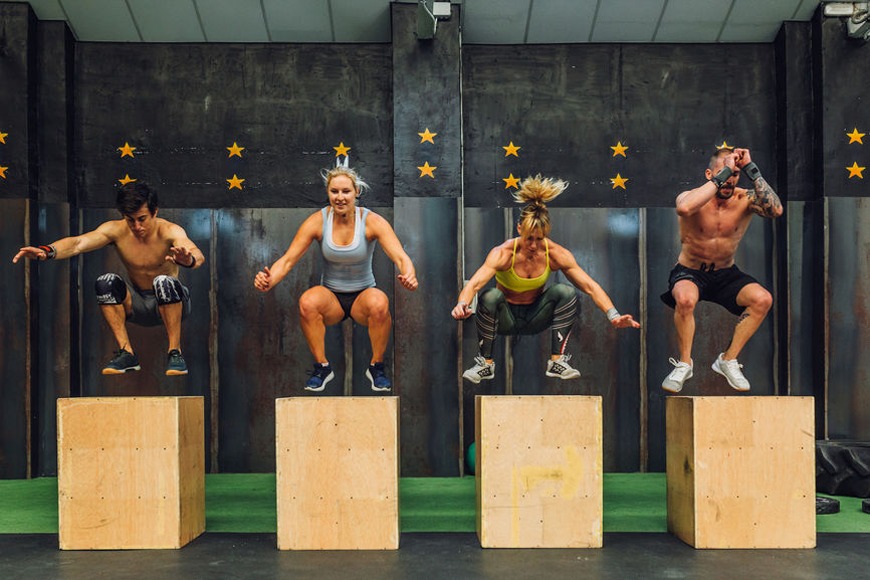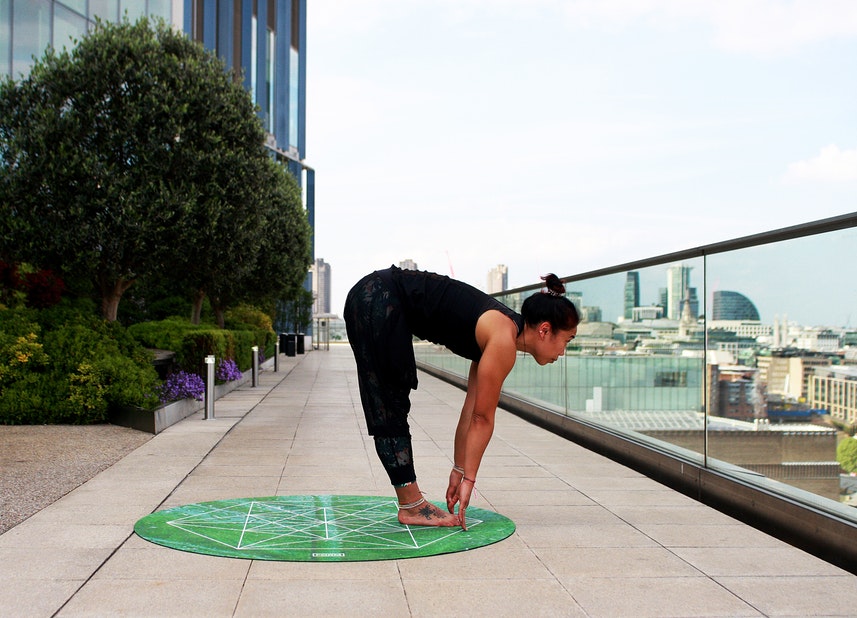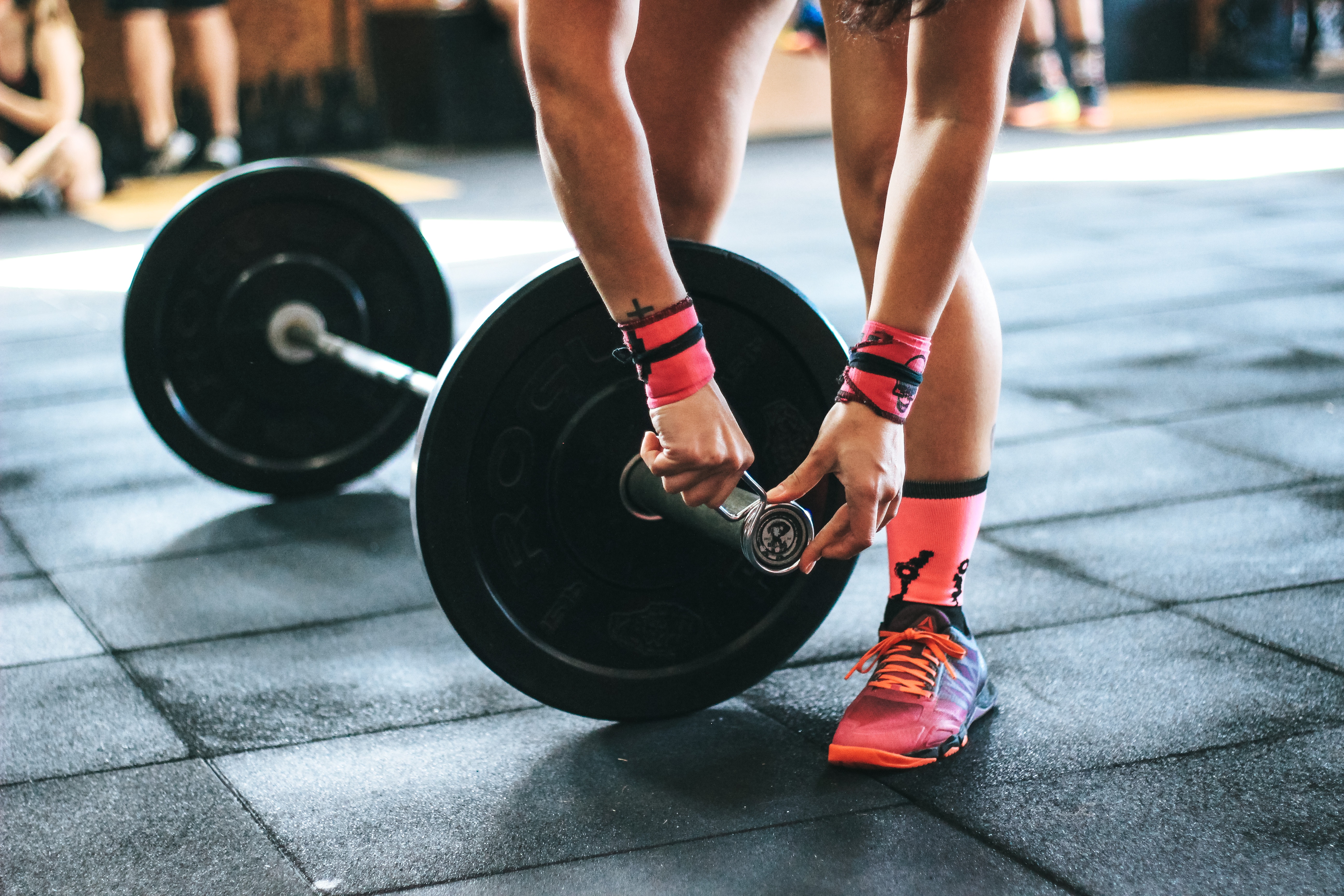So in the name of demystifying CrossFit for the uninitiated, eight CrossFit coaches reveal what nobody tells you about CrossFit before you join (i.e., what you probably can't find with a Google search).
Below, they share nuggets of knowledge you probably won't learn by watching The Sport Of Fitness on TV.

You don't have to be fit to get started
Spoiler alert: what you've heard is true. CrossFit really is for anyone, not just people can know what a "power snatch" is.
There's a misconception that you have to have previous fitness experience to try CrossFit. "You don't have to be in shape, lose a few pounds, or put on some muscle before starting CrossFit—just like you don't have to have a college degree to go to college," explains former Regionals athlete Allison Warner, a coach at ICE NYC. The only thing you need to start is the confidence to walk through the door.
Each box is unique
“No two boxes are alike,” says CrossFit Games athlete Kelsey Kiel, a coach at CrossFit Invictus Back Bay previously told Well+Good. “The culture, coaching, and space of every box is different.” That's why before you commit yourself and your credit card to a box, drop in. Take note of its class structure, find out who writes its programming, figure out what your commute would look like, chat with at least two of the coaches, and study the overall vibe and energy of the community.

{{post.sponsorText}}
Some boxes are better for beginner athletes and have a comprehensive on-ramping program (more on that below). If you're new to exercising, prioritize that. Some gyms have a community that socializes outside of the gym. If you're a former college athlete or team player, you may want to prioritize that instead.
CrossFit isn't a cult, but it's basically camp for adults
CrossFit is often referred to as a cult—which, of course, it isn't, but the community element is super strong. "Your box becomes more than a gym. It often becomes your second home," says level 1 coach Gabby Pryor of CrossFit Union Square. "Crossfit goes beyond exercise and fitness. It brings people together to form an amazing community." That's the case even if you're of the no-new-friends persuasion, because most people go to the same CrossFit class every day, so you'll end up with 20 or so friends just by showing up.
The learning curve is steep (but totally worth the climb)
Izzy Levy, the owner of a box called ICE NYC, explains that CrossFit is defined as "constantly varied functional movements performed at high intensity. … This means you never have to worry about getting bored of CrossFit." But it also means that there's a learning curve.
Most CrossFit boxes have a series of on-ramping classes. Some are six weeks, some are two- to five hour-long session. In addition to being a safe way to learn basic barbell and bodyweight movements, these session are a a sign that the gym that is beginner-friendly. But TBH, even after these classes you'll probably feel like you're learning something new every class for the first month or two. That's okay, because (cheese alert!) you'll have a coach and community guiding you.
It sounds cliché, but consistency is key
When you're new, the best thing you can do is to keep showing up."For beginners, I recommend a three-days-on, one-day-off schedule for beginners," Warner says. This will help you learn the ropes at a steady pace.
As a bonus, it'll help you fight the soreness. "Keep coming! Your body will get used to it," says Taylor Gerrasch, a level 1 coach at CrossFit Union Square. "If you take one too many days off then it becomes a vicious cycle to break, if you rest until you are not sore, then you will be just as sore following your next class."

You're going to have to prioritize rest and recovery
On the flip side, if you're someone who goes to SoulCycle six times a week, or rolls out her mat literally every morning, when you join CrossFit you may have to start taking more rest and recovery days than you're used to. The "why" comes down to science.
When you exercise, you're creating micro-tears in your muscles, which repair and help you grow back stronger. If there's not enough time for your muscles to repair, you'll just keep breaking them down. So in the name of gains, get foam rolling and epsom salt bathing.
From times and weights to feelings, log everything
Most CrossFit boxes provide a membership to a training log app like Wodify, Beyond The Whiteboard, and myWOD which allows you to log and track your times, weights, and overall progress. These apps are great especially when you're weightlifting—for example, if a workout requires that you power clean 70% of your 1 rep max, the app will calculate it for you. But consider keeping a fitness journal, too, suggests Mike Ramirez, a level 2 coach at ICE NYC.
A fitness journal isn't a "dear diary" kind of thing (though it can be). It's a way to track your accomplishments, how workouts make you feel mentally and emotionally, and a way to track non-physical progress. "No one tells you how deeply personal your fitness journey can be. It can be a place to lose and find yourself all at once. Write it all down, because the dose of mindfulness will fuel growth," he says.
You're not going to get bulky unless you're trying to get bulky
When women walk into a CrossFit box for the first time, they often come in with preconceived notions about what a CrossFitter looks like. Despite what you see on TV or on your Instagram feeds, most CrossFitters look just like you. Despite its gritty hardcore reputation, most CrossFit athletes are regular folks just looking for a challenging workout. "It's not what you see on ESPN," says Ian Berger, founder of Altrufuel. "It's just fitness made fun and social."
But strong is sexy, so if you want to to become bulkier, you can tailor your CrossFit experience to help you meet that goal, too. "The women you see on TV are some of the strongest women in the world. Fitness is their full-time job. To look like them, you'd have to train weight training for three hours and eat at least 3,500 calories every day. It takes time and dedication," says Tony Carvajal, a level 1 coach and RSP nutrition trainer.
You're probably not going to get rhabdo
If you've been Googling "Is CrossFit for me" or "Should I try CrossFit," chances are you've seen fear-mongering headlines warning about the sports ability to cause rhabdo (or as it is medically know, rhabdomyolysis). Rhabdo, essentially is what happens when our muscle fibers break down—which happens when people push themselves too hard, too much, or too fast— and then the byproduct (called myoglobin) is then released into the bloodstream, poisoning the kidneys. The symptoms are typically extreme variations of typical post-workout soreness and pain: swollen thighs, unbearable muscle pain, an inability to walk, nausea, difficulty bending at the knees, and dark brown urine ("soda-colored pee" is the condition's most notorious symptom). Ick.
There's no doubt about it, rhabdo is a serious health concern. Yet,it happens to a very small percentage of CrossFitters. And it can happen as a result of any go-hard exercise like spinning, running, or HIIT when taken to an extreme. The bottom line is that if you listen to your body (which is the best rule of thumb for any workout), listen to your coach, and scale appropriately, you should be a-okay.

CrossFit is amazing, but it doesn't need to become your everything
As the joke goes, "A CrossFitter and a vegan walk into a bar. Which one tells you first?” That's because for many people, CrossFit becomes a key pillar of their identity. Maybe it's because it's so easy to see incremental progress and improvements, or because the #fitfam component means you'll accrue a new crew of friends who talk about CrossFit constantly. Or maybe it's because, according to Carvajal, CrossFit is literally addictive. "High intensity exercise causes the body to produce serotonin and high levels of dopamine, which gives you that natural and addictive high," he says.
While all these things are probably inevitable, it's easy for a lot of CrossFitters to get to get to a point where getting their WOD on and getting better at CrossFit is their everything.
Adding fitness to your wellness routine is great, and getting stronger comes with some serious health perks. But with CrossFit in particular it's easy to overtrain and start working out twice a day, making a habit out of turning down invites from your non-CrossFit friends, or asking folks about their Fran or Diane times at parties. So if you lose sight of moderation, remember that CrossFit is just one part of a healthy boss-babe lifestyle.
Think you're ready to give CrossFit a try? Now all you need is a box.
Here’s what happens when yogis try CrossFit for the first time. And here's the answer to every other question you might have about CrossFit.
Loading More Posts...